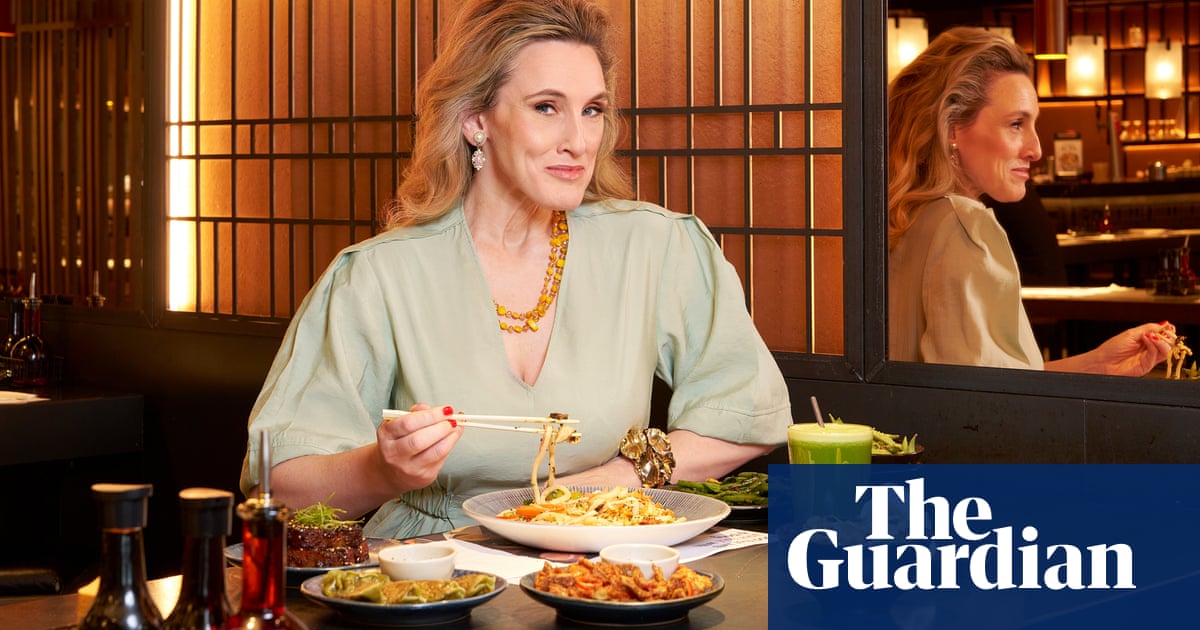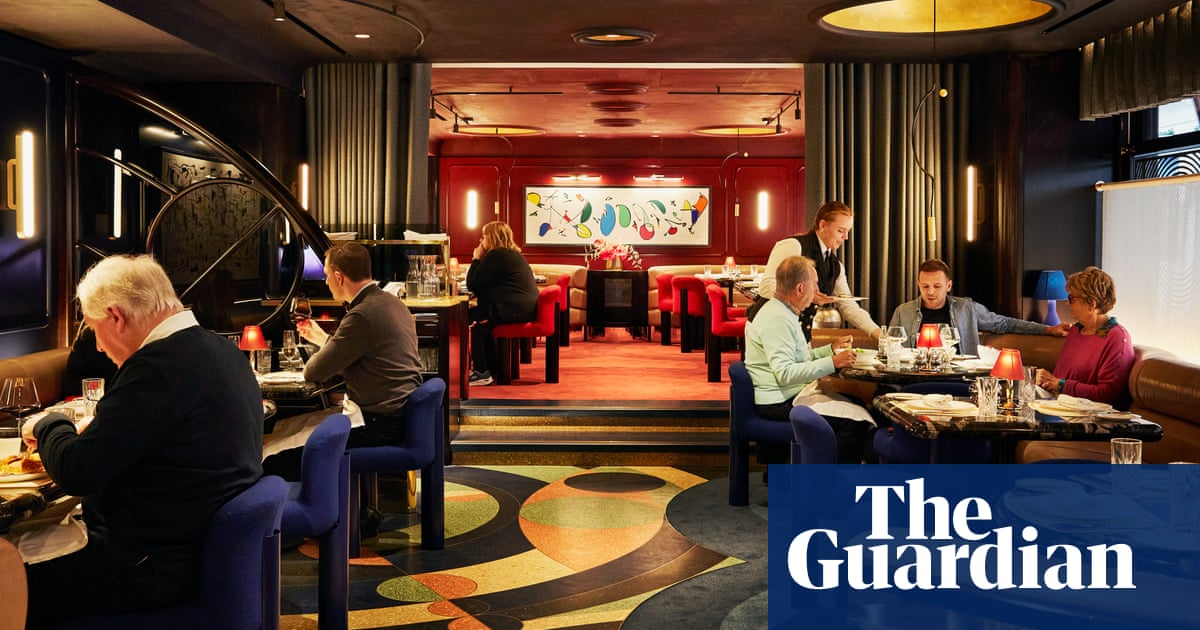
I have a job which often requires me to eat more than a human being probably should; 2,000 calories in one meal is quite normal – lots of butter, sugar, fat, cream – all the things that make things taste delicious. I realised early on in this game that I could only do it if I ate quite sparsely the rest of the time.
I really watch what I put into my body now. I’ve realised that, from your mid-40s, everything you eat and drink shows in your face. You become hammered on a G&T and feel awful after a late-night Burger King.
I went teetotal about nine months ago. I had been drinking in a very British way since I was 14. I wouldn’t have said I had an alcohol problem– I didn’t binge or drink secretly – but I began as a teenager in a field, then moved on to student bars, dinner parties, the media industry, and then to reviewing restaurants where endless drinks are on offer. I grew sick of losing bits of life to feeling shit. So I just stopped completely. My skin looked radically different right away. When I go out now, I usually have a shrub or booze-free aperitif.
I skip breakfast a lot – often, it’s just a litre of coffee with oat milk – and I eat lots of protein at lunch, eggs in any form, a block of tofu I’ll have marinated and baked, lots of nuts and dried fruit. And I roast loads of vegetables: broccoli is a favourite. I eat like a wild animal – apart from the meat. I drive my man mad. His idea of joy is cooking half a cow three different ways. I’m more of an ape; I love vegan food.
Whenever I talk about loving vegan food, it starts a backlash. The vegans aren’t happy with me because I’m not fully vegan and the meat eaters say I’m trying to destroy the farming industry. Any nuance seems to get lost. It does seem to fascinate people, though, that I’m a food critic who doesn’t love foie gras. Stereotypically, those guys love a kidney, bone marrow, sweetbreads. Not me.
One of the reasons I have trouble with meat is I’m a massive animal lover. My dream is to go full Celia Hammond and have a little animal sanctuary, at which point I will stop wearing a bra and ditch the false eyelashes. I am uncomfortable with killing animals.
My freezer always has veggie burgers in it. I don’t think you should eat them every day, but they’re really handy. I don’t get the anger about Linda McCartney-style foods – there are far worse things. People ask: “Why do you want a burger if it’s not a burger?” But what don’t they understand? When you have a beef burger, you don’t just want the patty – you want the lovely bun and the butter and the sauce and the chips and the salad. Who cares what the patty is, as long as it tastes peppery and herby and has that mouthfeel?
There are a few go-to cookbooks on my shelves. I love Nigel Slater because his recipes are more like suggestions: he ruminates rather than prescribes. And I bloody love Nigella; How to Be a Domestic Goddess is my most destroyed book. Also Ottolenghi Simple, Emma Spitzer’s Fress, which is full of bright, bold Jewish flavours, and Cooking Like Mummyji by Vicky Bhogal. This book taught me how to make Indian food with everyday British ingredients.
When I eat out or get takeaway, I usually go for spice. I order loads from Wanstead Kitchen, an Indian cafe near where I live, which I hope I don’t regret telling you about (one Christmas Day, when I was working on Radio 2, I had a massive Hyderabadi biryani and iftari kala chana, a black chickpea curry, from them – heaven). You’ll often see me in the Wagamama in Westfield Stratford during the day, eating bang bang cauliflower, which is one of the hottest things on a mainstream British menu. And Tonkotsu: I love their ramen, and I really love Eat the Bits, their chilli sauce, which I’ve taken to eating simply with bread and butter.
The British palate has veered towards chilli sauce en masse. It’s become bog-standard to crave a blast of it. Ten years ago, ketchup was the condiment in every shopping trolley, but I think the likes of Blue Dragon sweet chilli sauce and sriracha are up there now. British communities come together in unity through some foods.
I grew up eating very simply. I lived in Currock, a suburb of Carlisle, in a little terraced house. Food was whatever came from the tiny supermarket down the road. My mum did cook – hotpots, stews, fairy cakes – but my most exciting meals were tinned. I still feel the love from a tin of macaroni cheese, ravioli, baked beans. I have strong memories of coming home from school and watching Pipkins with half a tin of Heinz tomato soup and some white bread toast spread with Dairylea. Absolute happiness.
When I moved to London, I lived in Bounds Green. I was surrounded by Greek and Turkish restaurants along Myddleton Road, proper Irish pubs, Korean and Vietnamese food, neither of which I’d known existed. It was like I’d only seen the world in black and white until that point. It was the food that kept me in London. The house prices are good in Carlisle but you can’t get very good sushi.
I used to read Winner’s Dinners in the Sunday Times and think: “I could do that.” People like me didn’t really review restaurants, though, and I didn’t have an in. But from my early days in London, I loved the different scenes in restaurants and when people asked me what a place was like, I’d tell them to pull up a chair. They’d know exactly what I was talking about from my explanation. I can’t say I learned my love of food from childhood holidays in Tuscany, but I know people liked hearing from me on the matter.
I’ve spent the last few months eating my way around the British coastline with Ainsley Harriott. In each place we visited, we sampled the whole spectrum of the food on offer. One moment I was eating in an Agatha Christie-style hotel, the next Ainsley and I were loading sugar into a giant machine to make rhubarb and custard sweets. It reminded me how much I love Great Britain, blustery beaches and seaside food. Because what’s better than being on an isolated beach and eating chips cooked in beef dripping from a kiosk?












